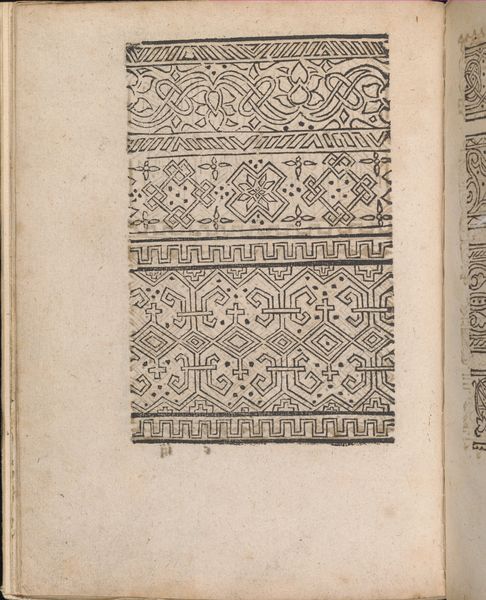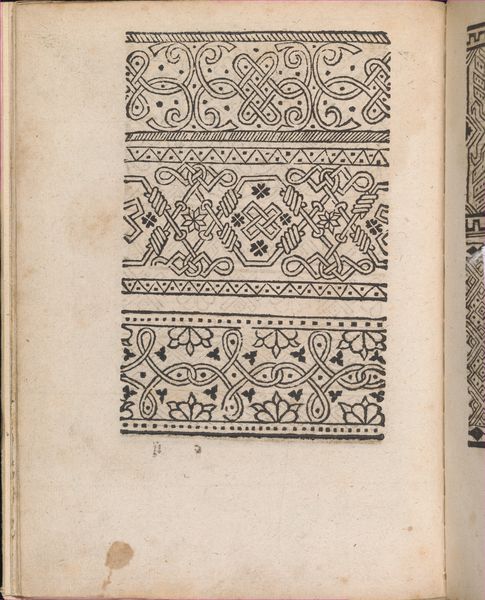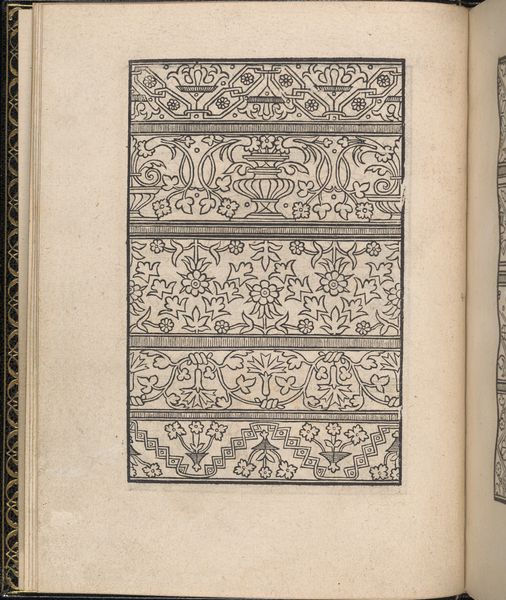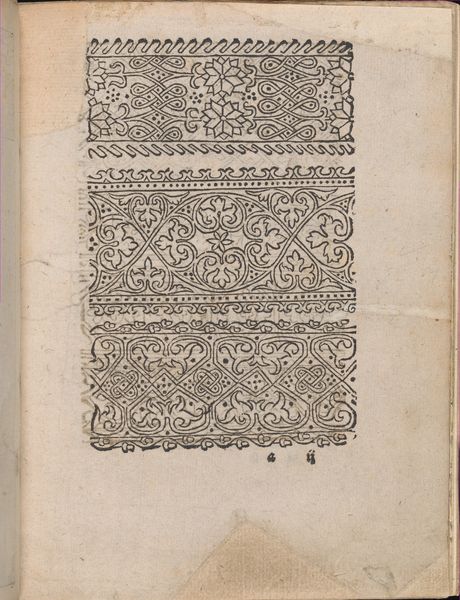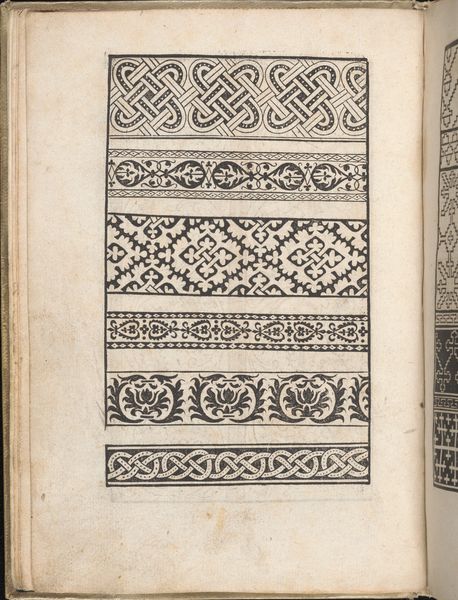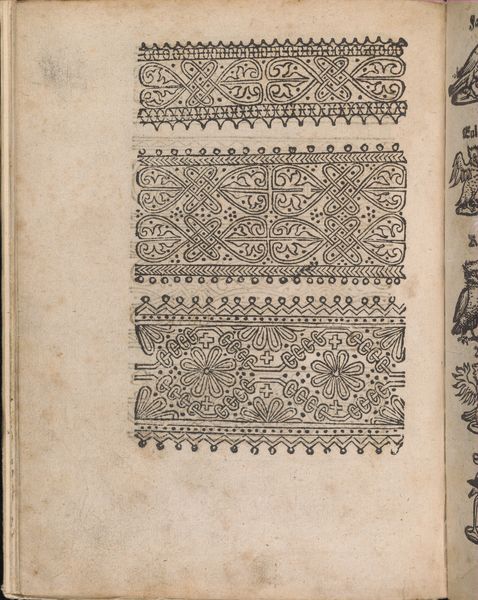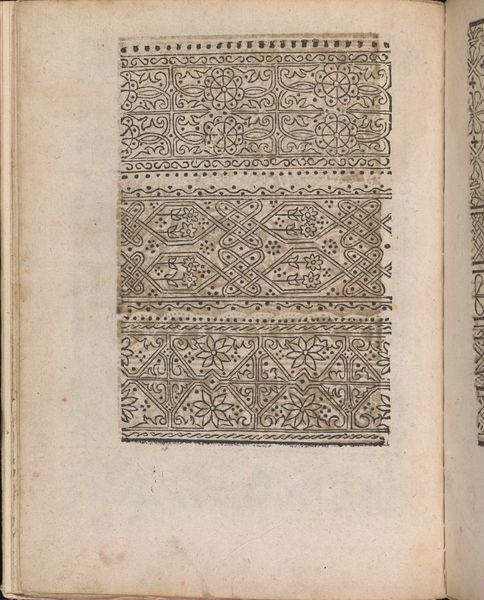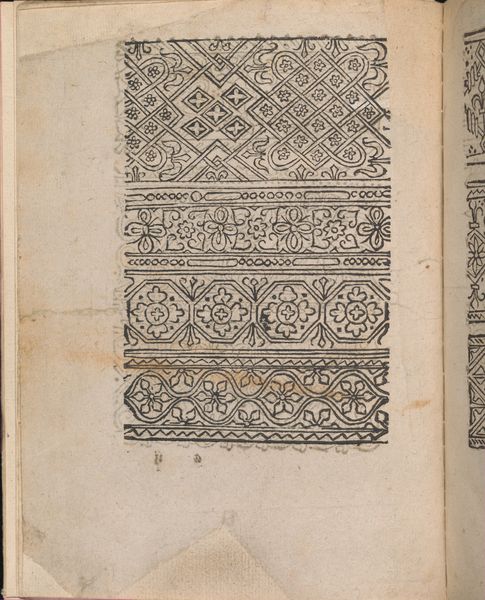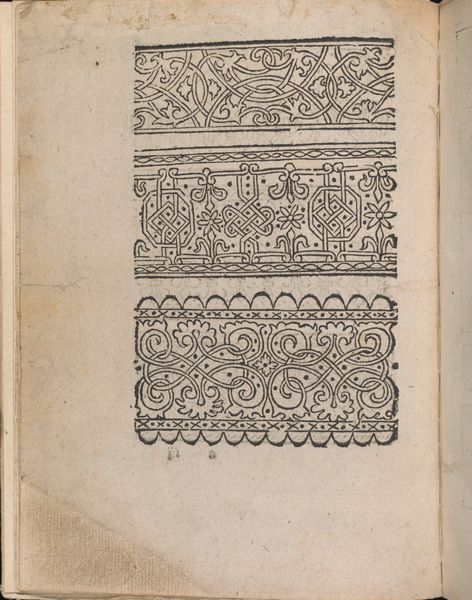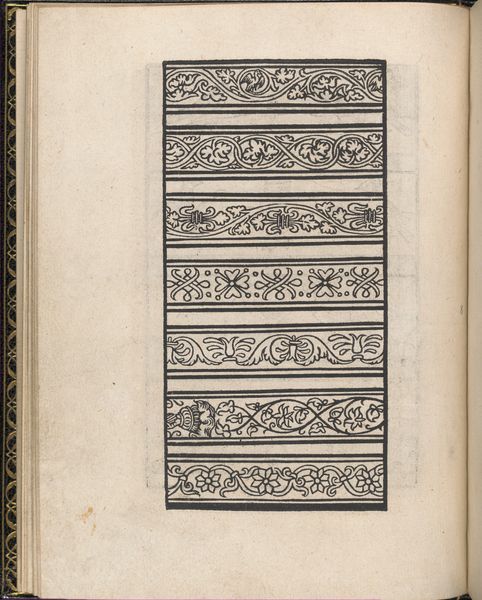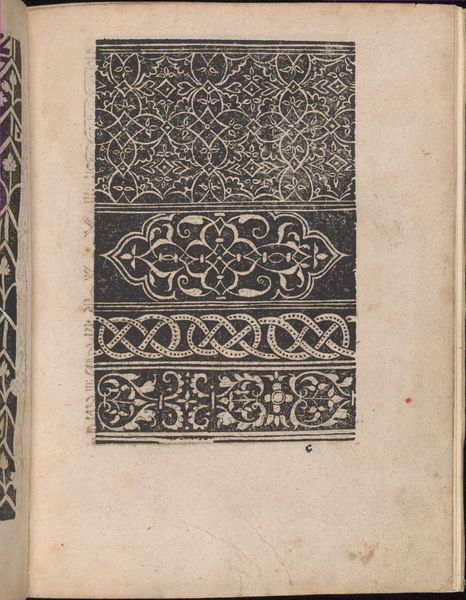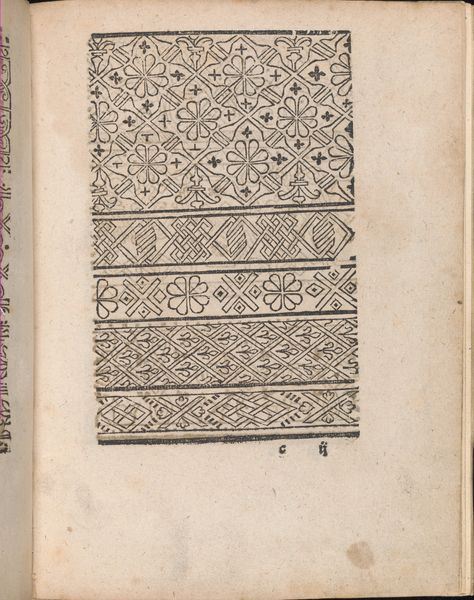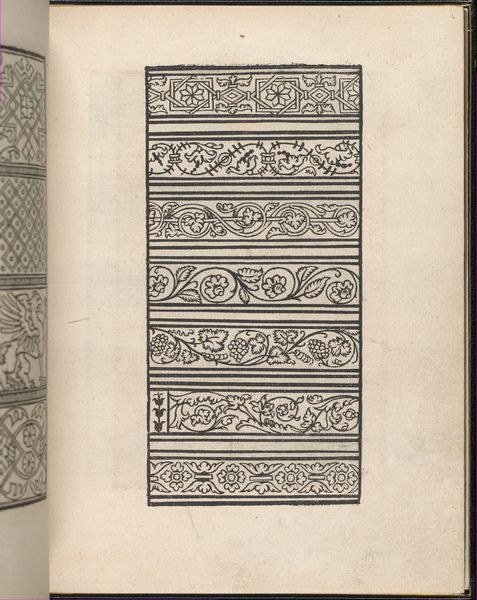
Modelbuch aller Art Nehens vn Stickens (Page 3r) 1535
0:00
0:00
drawing, graphic-art, print, paper, ink
#
drawing
#
graphic-art
#
medieval
#
ink paper printed
# print
#
book
#
paper
#
ink
Dimensions: Overall: 7 5/16 x 5 5/16 in. (18.5 x 13.5 cm)
Copyright: Public Domain
Editor: Here we have a page from *Modelbuch aller Art Nehens vn Stickens*, or "Model Book of All Sorts of Sewing and Stitching," created in 1535 by Christian Egenolff. It's an ink print on paper, and the designs look almost architectural to me – so structured and repetitive. What do you see in this piece, looking at it from an art history perspective? Curator: I see not just patterns, but a reflection of the era's constraints and aspirations. These aren't simply decorative motifs; they are encoded expressions of identity, class, and gender roles. How might the creation and use of such a book relate to the limited avenues available for women's creative expression at the time? Editor: That’s interesting; I hadn't considered the social limitations. So, was this primarily for women, then? Curator: Absolutely. Embroidery and needlework were crucial skills, signifying a woman's domestic capabilities and social standing. These pattern books were a means of transmitting and reinforcing these expectations. How does understanding this historical context shift your perception of the 'architectural' feel of the patterns? Editor: I guess I see it differently now. The rigid structure I observed feels more like the structure of society itself, imposing these roles and expectations. It makes the act of choosing and adapting the patterns feel like a small act of rebellion, maybe? Curator: Precisely. Even within these constraints, there’s room for agency and subtle subversion. Considering the global circulation of these patterns, how might they also speak to the exchange and negotiation of cultural values? Editor: It's amazing how much is packed into one page of a pattern book! I thought it would be simple decoration, but it reflects so much more about gender and society. Curator: Indeed. Examining the past through this lens encourages us to question the structures that shape our present.
Comments
No comments
Be the first to comment and join the conversation on the ultimate creative platform.
